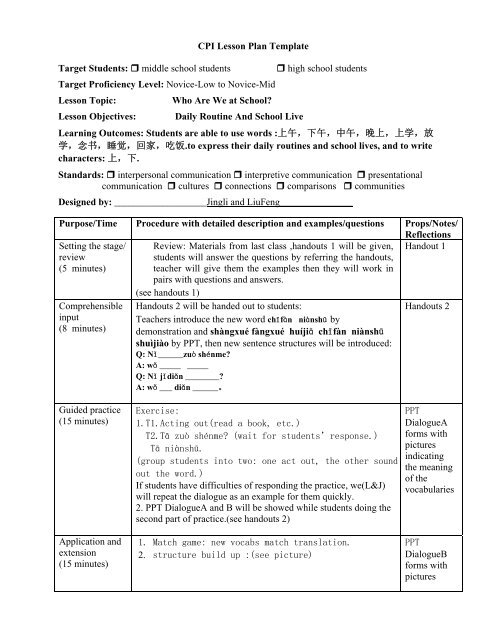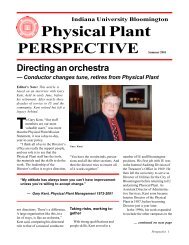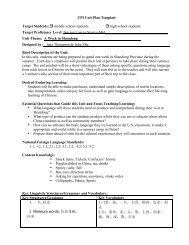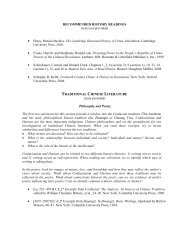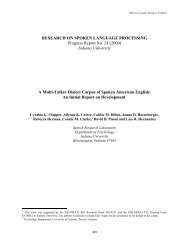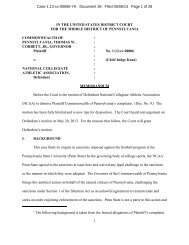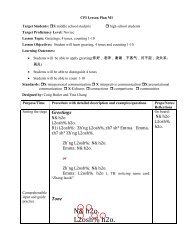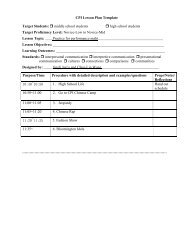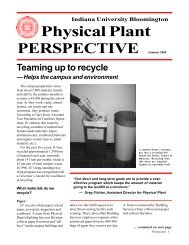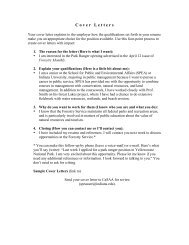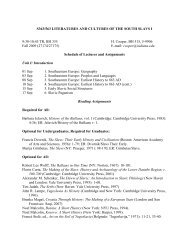Lesson Plan 3
Lesson Plan 3
Lesson Plan 3
Create successful ePaper yourself
Turn your PDF publications into a flip-book with our unique Google optimized e-Paper software.
CPI <strong>Lesson</strong> <strong>Plan</strong> Template<br />
Target Students: middle school students high school students<br />
Target Proficiency Level: Novice-Low to Novice-Mid<br />
<strong>Lesson</strong> Topic:<br />
Who Are We at School?<br />
<strong>Lesson</strong> Objectives: Daily Routine And School Live<br />
Learning Outcomes: Students are able to use words : 上 午 , 下 午 , 中 午 , 晚 上 , 上 学 , 放<br />
学 , 念 书 , 睡 觉 , 回 家 , 吃 饭 .to express their daily routines and school lives, and to write<br />
characters: 上 , 下 .<br />
Standards: interpersonal communication interpretive communication presentational<br />
communication cultures connections comparisons communities<br />
Designed by: ___________________Jingli and LiuFeng_______________<br />
Purpose/Time Procedure with detailed description and examples/questions Props/Notes/<br />
Reflections<br />
Setting the stage/<br />
review<br />
(5 minutes)<br />
Review: Materials from last class ,handouts 1 will be given,<br />
students will answer the questions by referring the handouts,<br />
teacher will give them the examples then they will work in<br />
pairs with questions and answers.<br />
(see handouts 1)<br />
Handout 1<br />
Comprehensible<br />
input<br />
(8 minutes)<br />
Handouts 2 will be handed out to students:<br />
Teachers introduce the new word chīfàn niànshū by<br />
demonstration and shàngxué fàngxué huíjiā chīfàn niànshū<br />
shuìjiào by PPT, then new sentence structures will be introduced:<br />
Q: Nǐ______zuò shénme?<br />
A: wǒ _____ _____<br />
Q: Nǐ jǐdiǎn ________?<br />
A: wǒ ___ diǎn ______。<br />
Handouts 2<br />
Guided practice<br />
(15 minutes)<br />
Application and<br />
extension<br />
(15 minutes)<br />
Exercise:<br />
1.T1.Acting out(read a book, etc.)<br />
T2.Tā zuò shénme? (wait for students’response.)<br />
Tā niànshū.<br />
(group students into two: one act out, the other sound<br />
out the word.)<br />
If students have difficulties of responding the practice, we(L&J)<br />
will repeat the dialogue as an example for them quickly.<br />
2. PPT DialogueA and B will be showed while students doing the<br />
second part of practice.(see handouts 2)<br />
1. Match game: new vocabs match translation.<br />
2. structure build up :(see picture)<br />
PPT<br />
DialogueA<br />
forms with<br />
pictures<br />
indicating<br />
the meaning<br />
of the<br />
vocabularies<br />
PPT<br />
DialogueB<br />
forms with<br />
pictures
Assessment and<br />
wrap-up<br />
(5 minutes)<br />
1. Choose students volunteers to demonstrate the dialogues to<br />
the whole class<br />
indicating<br />
the meaning<br />
of the<br />
vocabularies<br />
Homework/<br />
preview<br />
(2 minutes)<br />
1. Fill out the form with your school daily routine or activities. Handouts 3
Picture<br />
structure build up: use all the words students have learned to fill out the<br />
columns to make a whole sentence.<br />
Personal pronouns Nouns Time words Verb<br />
EX:<br />
Paul de Bàba Jiǔdiǎnbàn Shuìjiào
Handouts 1: 6-25-2008/CPI-H10<br />
Review<br />
1. nǐ yǒu _____ ma?/ nǐ yǒuméiyǒu _____? (Do you have ___?)<br />
wǒ yǒu _____. (I have ____.)<br />
wǒ méiyǒu____. (I don’t have ____.)<br />
Nǐ zhùzài nǎr?<br />
wǒ zhùzài ____.<br />
(Where do you live?)<br />
(I live in ____.)<br />
Nǐ xǐhuān shénme?<br />
wǒ xǐhuān______.<br />
(What do you like?)<br />
(I like ____.)<br />
2. nǐde shēngrì shì jǐyuèjǐhào? (What date is your birthday?)<br />
Wǒde shēngrì shì_#__ yuè _#__ hào. (My birthday is ____.)<br />
Xiànzài jǐdiǎn? (What time is it?)<br />
Xiànzài _#__ diǎn. (It is ____.)<br />
Jīntiān xīngqī jǐ?<br />
Jīntiān xīngqī _#__.<br />
(What day is today?)<br />
(Today is ____.)<br />
Jīntiān jǐhào? (What is the date today?)<br />
Jīntiān _#__ hào. (Today is ____.)
Handouts 2: 6-25-2008/CPI-H10<br />
Dialogue A<br />
Asking When Something Happens<br />
Sentence structure<br />
Q: Nǐ______zuò shénme?<br />
A: wǒ _____ _____<br />
Example:<br />
Nǐ _xiàwǔ_ zuò shénme?<br />
Wǒ xiàwǔ niànshū。<br />
( s + TW + V )<br />
A<br />
Q<br />
TW<br />
shàngwǔ<br />
zhōngwǔ<br />
xiàwǔ<br />
wǎnshàng<br />
TW<br />
shàngwǔ<br />
zhōngwǔ<br />
xiàwǔ<br />
wǎnshàng<br />
morning<br />
noon<br />
afternoon<br />
evening;night<br />
huíjiā<br />
shàngxué<br />
Chīfàn<br />
Niànshū<br />
shuìjiào<br />
V<br />
Dialogue B<br />
Telling the Time When Something Happens<br />
Sentence structure:<br />
Q: Nǐ jǐdiǎn ________?<br />
A: wǒ ___ diǎn ______。<br />
Example:<br />
Q: Nǐ jǐdiǎn shuìjiào?<br />
A: Wǒ shí diǎn shuìjiào 。<br />
( s + TW + V )<br />
shàngxué<br />
fàngxué<br />
huíjiā<br />
chīfàn<br />
niànshū<br />
shuìjiào<br />
go to school<br />
(school) dismissal<br />
go home<br />
eat a meal<br />
study<br />
sleep<br />
New Characters: 上 下
6-25-2008/CPI-H10-Handout 3 (HOMEWORK)<br />
Use complete sentences to fill out the form with your Daily Routine and School<br />
Activities:<br />
(Example: 7:00 am: wǒ qīdiǎn qǐchuáng____)<br />
9:00 am: __________________________________<br />
10:00 am: __________________________________<br />
11:00 am: __________________________________<br />
12:00 pm: __________________________________<br />
1:00 pm: ___________________________________<br />
3:00 pm: ___________________________________<br />
5:00 pm: ___________________________________<br />
7:00 pm: ___________________________________<br />
9:00 pm: ___________________________________<br />
10:00 pm: ___________________________________
PPT:<br />
H10


